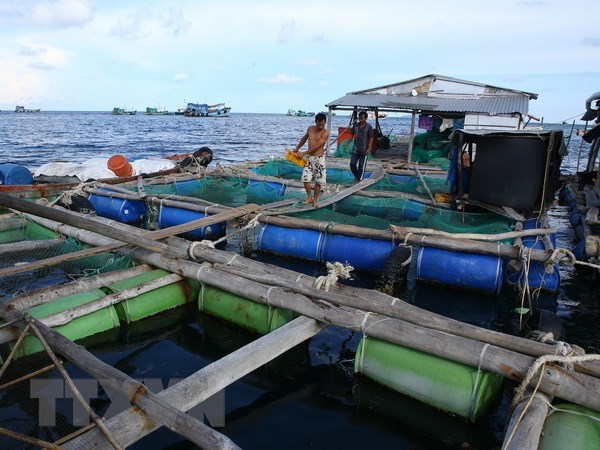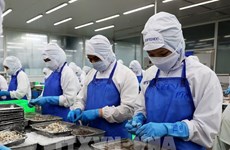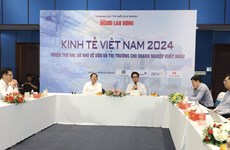Draft strategy targets Vietnam’s leading position in Asian mariculture
A draft strategy for sea farming development has set the target of making Vietnam a leading country in mariculture in Asia, and one of the world’s top five farmed seafood producers and exporters by 2050.
 An offshore fish farm in the Mekong Delta of Kien Giang (Photo: VNA)
An offshore fish farm in the Mekong Delta of Kien Giang (Photo: VNA)Hanoi (VNA) – A draft strategy for sea farming development has set the target of making Vietnam a leading country in mariculture in Asia, and one of the world’s top five farmed seafood producers and exporters by 2050.
The Directorate of Fisheries under the Ministry of Agriculture and Rural Development held a workshop on July 11 to collect opinions on the draft strategy.
Deputy General Director of the directorate Tran Dinh Luan said Vietnam boasts huge potential and advantages for sea farming, including a coastline over 3,260km in length and a great number of islands and bays, especially western sea areas that are less vulnerable to storms and the areas off the coast of the central region which have favourable depth conditions for sea farming.
However, sea farming in the country is still scattered and operates on a small scale, yet to fully tap into its potential and natural advantages, he noted, voicing his hope for better mechanisms and policies to attract investment in this field.
Echoing this, Patrick White from the US Soybean Export Council, which also engages in offshore aquaculture and aquatic technique-related activities, said Vietnam holds much potential and advantages for the development of sea farming. If there are specific mechanisms and policies, these resources will be optimised.
In the draft strategy for 2030 with a vision towards 2050, sea farming will be developed into a concentrated, large-scale, and sustainable production sector, creating high-quality goods for the domestic market and exports.
By 2020, policies encouraging industrial offshore aquaculture will be piloted, while the number of enterprises involved in industrial mariculture will be increased in potential localities such as Hai Phong city and the provinces of Quang Ninh, Phu Yen, Khanh Hoa, and Kien Giang.
The draft plans that by 2030, Vietnam will have successfully built a concentrated, modern, and environmentally-friendly sea farming industry with diverse products, high productivity, reasonable structure, and good competitiveness and integration capacity.
Mariculture is expected to cover 300,000ha of the water surface, producing 1.75 million tonnes of seafood and earning 5-8 billion USD from exports each year by that year.
By 2050, the country hopes to have an advanced sea farming industry with sustainable development. The sector will become a key part of sea-based economic activities and contribute 2-3 percent to total GDP.
Offshore aquaculture is targeted to produce 3 million tonnes of seafood and gain more than 10 billion USD from exports every year by 2050, according to the draft strategy. -VNA











